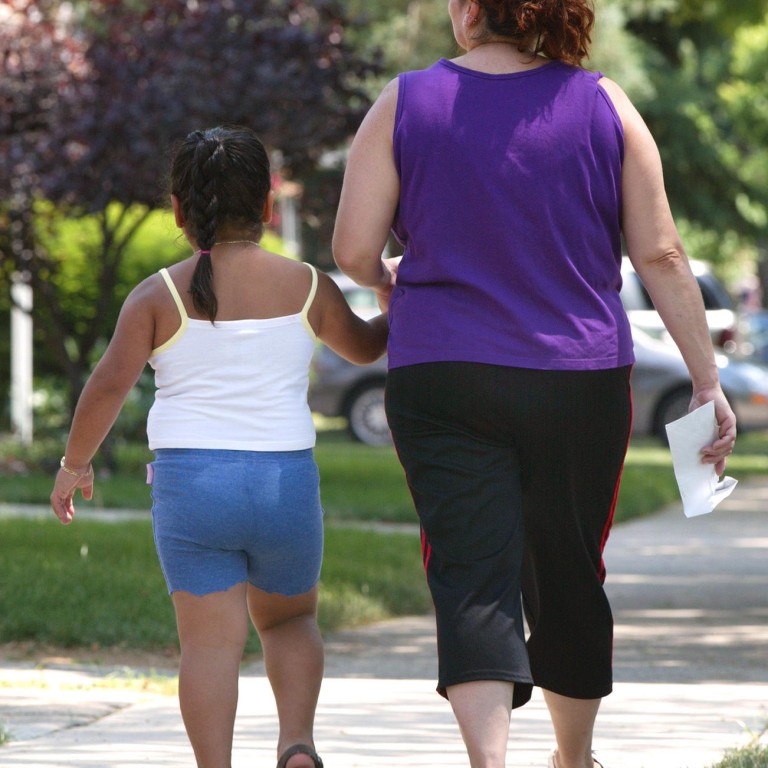
Obesity rates among American children aged two to five halve in a decade
Proportion of those aged two to five who are severely overweight halves, but experts say there is no improvement in overall population
While US rates of obesity have not changed much in a decade, young Americans are showing signs of a turnaround, with rates nearly halving in that time, according to a new federal study.

"The rapid increase in obesity we saw in the '80s and '90s has definitely slowed," epidemiologist Dr Cynthia Ogden said. "There's some glimmer of hope in the new data in relation to the two-to-five-year-olds."
Ogden, from the National Centre for Health Statistics, a division of the Centres for Disease Control and Prevention (CDC), is lead author of the study.
The CDC said it was not clear what factors had led to the decline, but cited improvements in the food and physical activity available at child-care centres, a drop in consumption of sugary drinks and even an increase in breastfeeding rates, which have been shown to help prevent obesity later in life.
"This confirms that, at least for kids, we can turn the tide and begin to reverse the obesity epidemic," CDC director Tom Frieden said.
First lady Michelle Obama issued a statement that her Let's Move! initiative - which promotes youth exercise and nutrition - is making healthier habits "the new norm".
However, since 2003, women aged 60 years and older have been growing fatter. Their rate of obesity rose from 31.5 per cent to 38 per cent over nine years, the study found.
Ogden and her colleagues used the annual National Health and Nutrition Examination Surveys to examine obesity trends in representative samples of Americans between the 2003-2004 survey year and 2011-2012.
A 5.5 percentage point drop in the obesity rate among two-to-five-year-olds mirrored decreases found among preschool children in previous studies, the authors wrote.
A report published last year, for example, found that after doubling over 30 years, the obesity rate among low-income preschool children fell in 19 US states and territories.
Nonetheless, more than two-thirds of American adults and nearly one-third of those aged between two and 19 fell into the overweight or obese categories in 2011-2012.
For adults, body mass index (BMI), a measure of weight relative to height, defines obesity. A BMI above 25 is considered overweight, and a BMI over 29.5, which is equivalent to a 1.62 metre adult weighing 79kg, is considered obese.
Dr David Ludwig, a paediatrics researcher at Harvard University in Boston, interpreted the report as a tiny step forward in the fight against obesity.
"The key finding is that obesity prevalence throughout the US population has not changed in the last decade and remains at historic highs," Ludwig said.
He also warned the decline in obesity rates among preschool children could be from chance.
"Nevertheless, if real, the lower prevalence among young children would be an encouraging sign that national paediatric obesity prevention efforts - though still grossly inadequate - may be having some impact," he said.
Michael Jacobson, executive director of the Centre for Science in the Public Interest, said he saw the report as a sign the obesity epidemic might have peaked.
But Jacobson also pointed to its findings on how differently obesity affected ethnic groups, with 82 per cent of African-American women and 77 per cent of Hispanic women overweight or obese, compared to 63 per cent of white women in 2011-2012.
"That's a real health crisis," Jacobson said. "These numbers are crying out for some real action."

